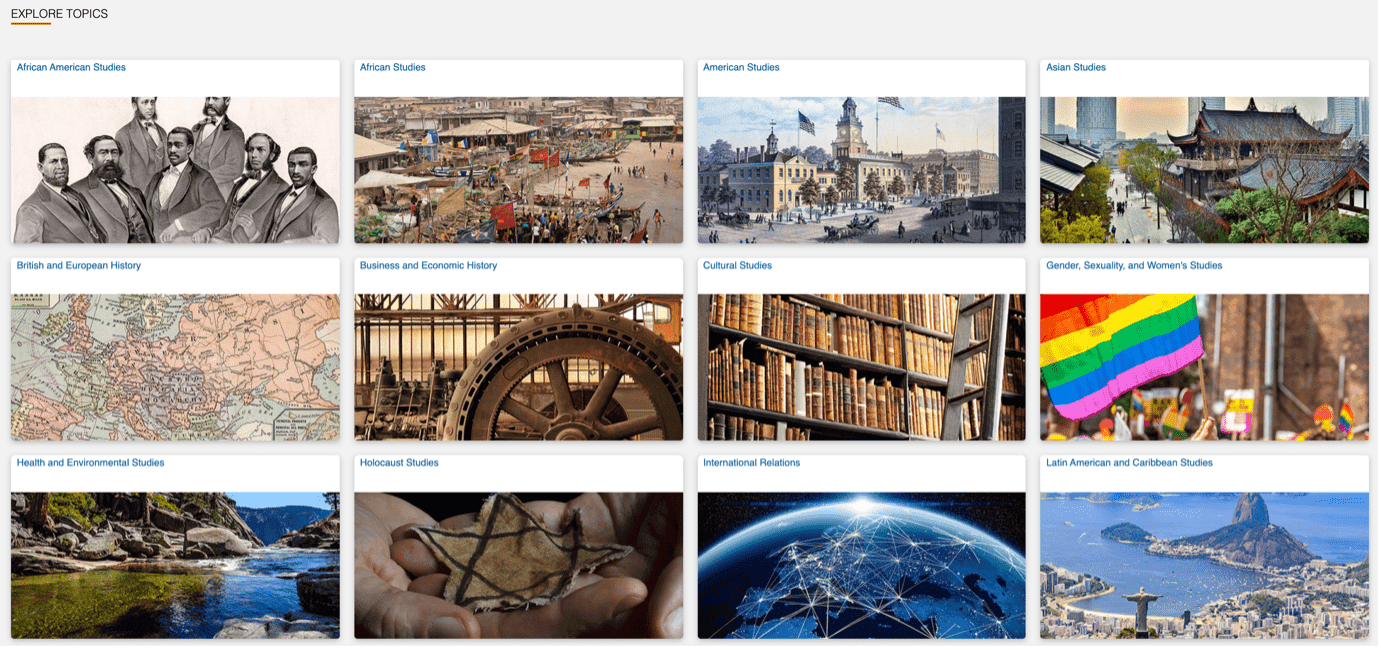│By Ellie Brosnan, Gale Ambassador at Durham University│
Studying archival material has been one of the most fascinating aspects of my History degree so far. Local libraries often host regional collections which provide a fascinating avenue into engaging with local histories, and being a student at Durham University in the north-east of England has allowed me to engage with primary sources from this area. During my time at university, for example, I have been lucky enough to see letters from servants at Durham castle from centuries past. Archives hold all manner of sources and uncovering new information is always rewarding, both physically and digitally. Delving into Gale’s online resources has also illustrated how digital archives can offer as much, if not more, compared to their traditional physical counterparts.
Archives Unbound – exploring narratives less told
Gale’s Archives Unbound series (included within Gale Reference Complete) includes over 300 niche collections of primary sources. Numerous different themes are covered including Gender and Sexuality, Latin American History, Native American History, and Caribbean Studies. The collections are based around specific histories and populations, including groups that have been marginalised and neglected in traditional historical narratives. Consequently, these sources often reflect a narrative that is not told in traditional History curriculums at schools or university. Many parts of history that have often been relegated to the peripheries find a place here, and I have found particularly interesting sources as a result.
Revealing lesser-known narratives
Within Archives Unbound, the Gender, Sexuality and Women’s Studies collections host a range of different sources relating to women and queer individuals and their experiences which are often not explored within mainstream curriculums. One particular collection entitled Phyllis Lyon, Del Martin and the Daughter of Bilitis compromises a range of material collected by the lesbian couple Phyllis Lyon and Del Martin over the course of the twentieth century. Lyon and Martin were two civil rights activists and the evidence within this collection stems from the different social movements that the two women led.
Documents within this collection that I found particularly interesting include the court decisions on the custody of children for lesbian mothers throughout the early 1970s. Different victories and losses are recorded here, such as the victory of Arlene Smith and Eunice Brown in 1973 (below). These narratives stood out to me because, when considering the difficulties gay and lesbian individuals faced within the latter half of the twentieth century, the AIDS epidemic is what most often comes to mind. Such archival material thus helps offer an insight into less well known and more every day struggles faced by these marginalised groups, revealing narratives which may not be the primary focus of the broader historical scholarship, but are no less important in understanding the past.

Finding day-to-day histories
Gale also offers a huge range of digitised newspapers, including newspapers from the seventeenth and eighteenth centuries which no longer publish, such as those collected by Reverend Charles Burney and printer John Nichols. These diverse and lesser known papers are quite unique sources, offering fantastic insight into the time period in which they published. Gale has also digitised many mainstream newspapers that still exist today, such as The Mirror, The Daily Mail and The Telegraph.
On a more humorous note than the court records explored above, I found fascinating snippets of history in newspapers such as The Sunday Times Historical Archive. Alongside the expected documents retelling the news of that week, one can find cartoons, advertisements and pieces aimed at children, such as the well-named “Funday Times”.
!["Cartoon Star." The Funday Times. Sunday Times, 21 June 1998, p. 3[S7]. The Sunday Times Historical Archive](https://review.gale.com/wp-content/uploads/2022/02/Ellie-Everyday-sources-The-Fun-Club-803x1024.jpg)
If we focus in on the top advertisement found in this page, we see it is by Tarmac Quarry Products. It seeks to encourage school children to create a design for their school playground and enter into a competition to have the design built in their own playground. Whilst a very different tone from the legislation I first explored, it is notable that once again the archives document normal and everyday aspects of life, far less covered in traditional historical narratives.
!["Cartoon Star." The Funday Times. Sunday Times, 21 June 1998, p. 3[S7]. The Sunday Times Historical Archive](https://review.gale.com/wp-content/uploads/2022/02/Gale-Blog-Post-2-Image-3-Copy-1-1024x424.png)
When we consider examining newspaper archival material, it is often to find documentation of those dramatic, newsworthy moments in history, but finding light-hearted advertisements and children’s cartoons serves as a nice illustration of the more everyday elements of life in history, and a lot can be drawn from sources like this in terms of social history and how society has evolved – or remained consistent. Thus, in reflecting these more “ordinary” aspects of life, newspaper archives can help us gain a broader and more realistic picture of the past, in contrast to narratives seen only through the lens of climatic moments that have more traditionally been deemed worthy of documentation by historians.
Lesser-known narratives and everyday realities
Archives offer an expansive range of material and go beyond merely recording those climactic and dramatic moments within history. From lesser-known legislation collected by activists to advertisement and children’s cartoons contained within newspapers, archives can provide a reminder of normality and can help students and researchers appreciate the true lives of people of the past, painting a broader and more realistic picture of history, inclusive of lesser-known narratives and everyday realities.
If you enjoyed reading about lesser-known narratives and everyday histories, you might like:
- Decolonising the Curriculum with Archives Unbound
- Unearthing and Decolonising the Rasta Voice
- Grassroots activism in amateur publications written by women, African Americans and the LGBT+ community
- Finding Black Female Authors in Women’s Studies Archive
- Pride and Protest: LGBT+ Disability Activism in the US
- The Lesbian Avengers and the Importance of Intersectionality in LGBTQ+ Activism
If you enjoyed reading about the value of primary sources, try:


